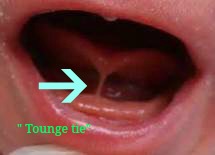Having trouble with Breatfeeding your baby? 4 reasons it may not be going well.

If you are unable to get a proper breastfeeding latch when your baby is feeding or if you feel that there are other problems with latch such as baby pulling off or tiring etc. then you’ll find this article essential.
There is a huge number of articles & videos on the internet explaining how to position baby correctly in order to get a breastfeeding latch that works. This advise helps thousands of Mum’s but despite this there are still lots & lots of babies that can’t establish a proper breastfeeding latch.
So if you are using the right techniques what stops baby getting a great breastfeeding latch?
What is often overlooked is that there is a physical reason preventing a proper breastfeeding latch. We aren’t talking about a serious physical problem – anything like this would have been picked up by the hospital. However there are lots of strains caused by birth, you’ll know this for sure as you were the one going through it all & giving birth! Baby is being squeezed, pulled stretched & twisted as they are being delivered & this often can cause enough strain to prevent a proper breastfeeding latch.
4 Physical Strains that prevent a proper breastfeeding latch
1. Frenulum problems (Tongue Tie)
2. Lower Neck or Shoulder Strain
3. Throat Muscle Strain
4. Imbalance of the Palate
How to check for physical problems that affect proper breastfeeding latch

Baby with a lower frenulum problem.
With a tongue tie (which is a problem with the frenulum) you are looking for restriction of the tongue (see photo) or restriction of the upper lip. If in doubt take your baby to a doctor or a midwife for them to check. If there is a problem, it can easily be resolved by a minor straightforward release by a qualified doctor or dentist who specializes in this field.
Lower Neck & Shoulder Problems
To check this lay your baby down & gently start to turn their neck to the left & then the right – if they complain or cry stop! If then don’t complain gently continue if you think its easier for them to turn to one side rather than the other then there may be neck or shoulder tightness. You can retest on a few different times just to make sure it wasn’t a one off. Also, observe your baby over a few days and note whether they tend always to look/turn to the one side.
If they have a neck or shoulder problem how does this affect latch?
It's because baby has to turn their neck to latch on properly. To minimize this make sure baby is completely straight when you want them to latch. Often baby will not be facing completely towards you and to latch on they will have to turn their neck.
If baby is much better on one breast than the other then this can also be a sign of a tight neck on that side. It can also be due to the letdown or other factors influencing the milk flow on that side.
Throat Muscle Strains
If baby has had their neck extended backward during birth often it can cause the anterior of the neck muscles (the throat) to be strained as these muscles run up into the lower jaw this can affect latch. You can gently feel this area of the neck when they are feeding it will enable you to tell how often they are swallowing. Baby should do a few sucks to each swallow, if they suck/swallow/suck/swallow they may have a strain of the neck muscles. This is not something a GP will be experienced in checking. Instead, you should ask the opinion of a lactation consultant or an osteopath or similar practitioner that focus on babies.
Imbalance of the Palate
The palate is the roof of the mouth; birth pressures can sometimes mean that the delicate bones & muscles in this area aren’t working nicely together. To check this put your little finger in your baby’s mouth. Encourage them to suck, if they don’t suck strongly then there may be a problem with the palate. When you remove your finger, you should feel the suction & when your finger comes free, a slight sucking noise indicates a good strong latch.
Breastfeeding Latch: How Osteopathy Can Help
One area of focus within osteopathy is the treatment of babies & children.This area usually requires post graduate training on top of the 4 or 5-year training that registered osteopaths are required to undertake.
An osteopath experienced in treating babies can use gentle techniques to examine and treat all 4 of the issues detailed above as well as check for many other common problems that present in babies.
Stay connected with news and updates!
Join our mailing list to receive the latest news and updates from our team.
Don't worry, your information will not be shared.